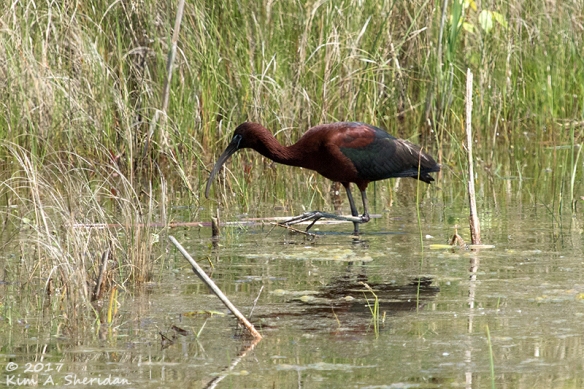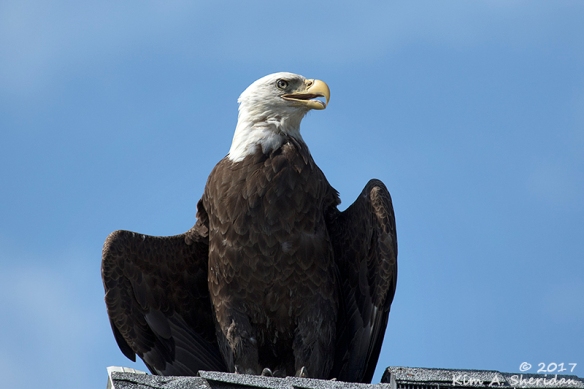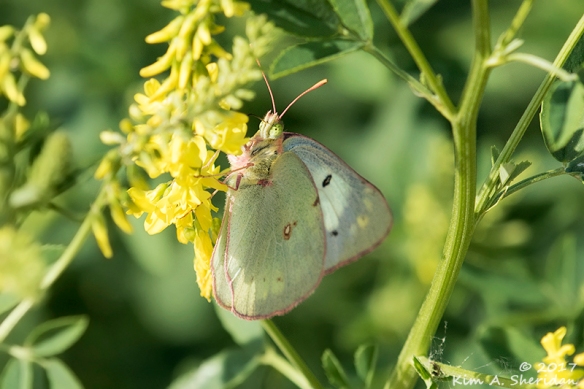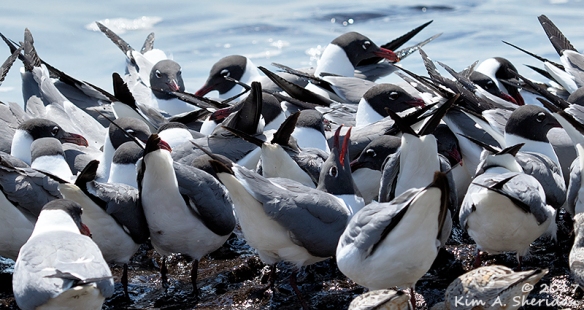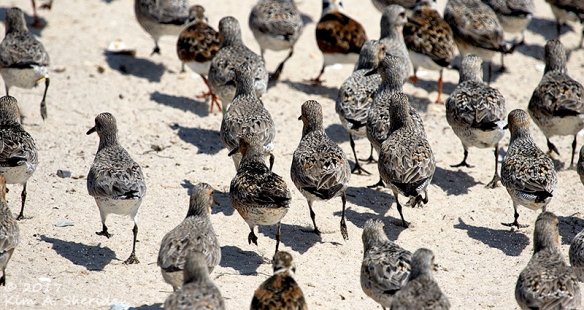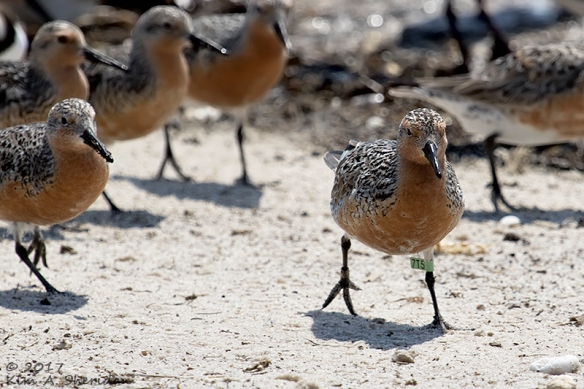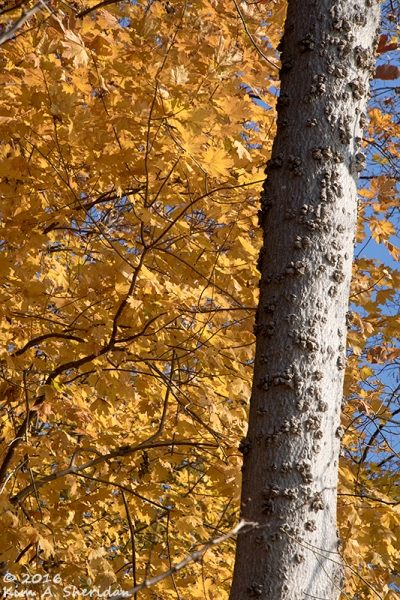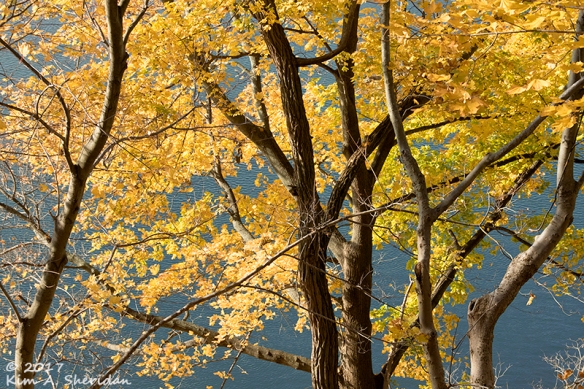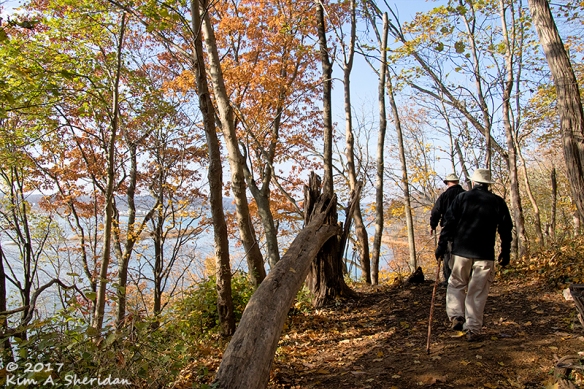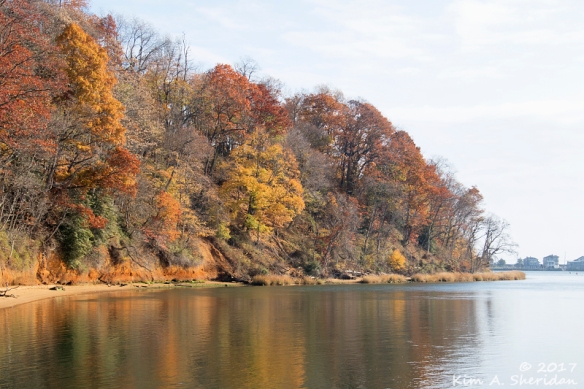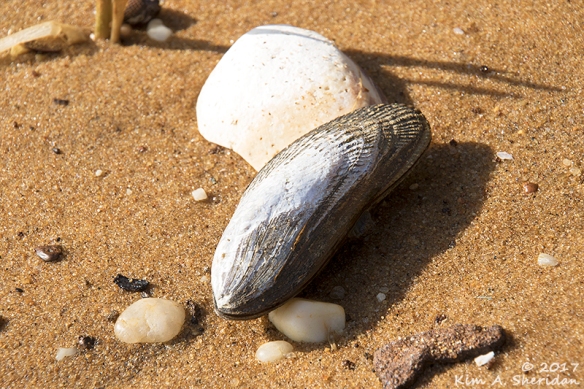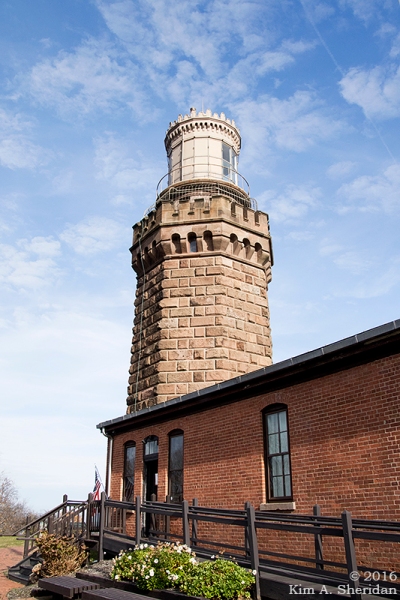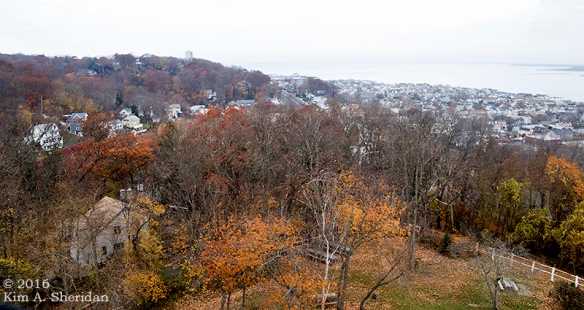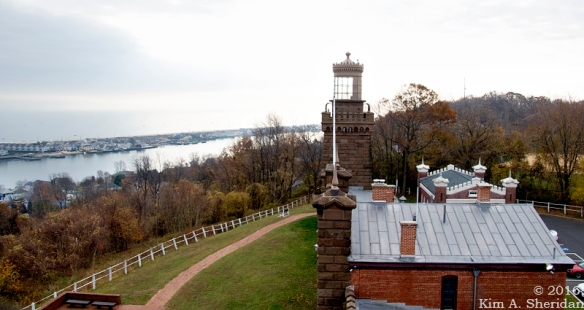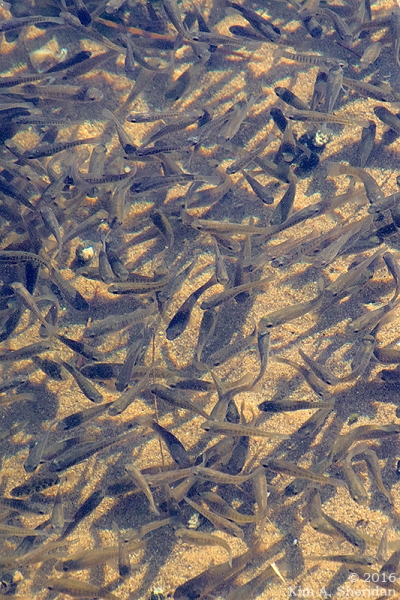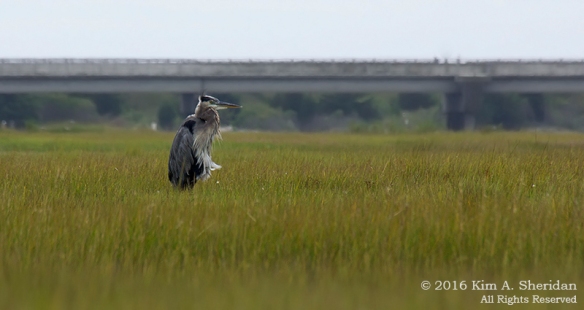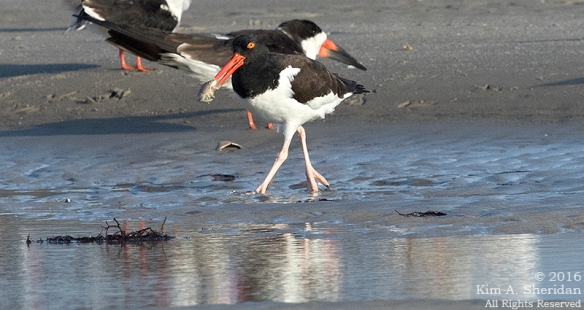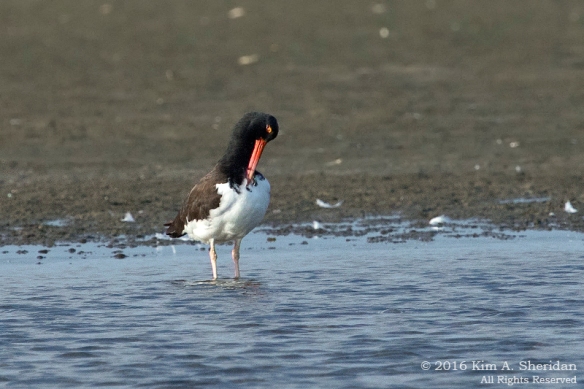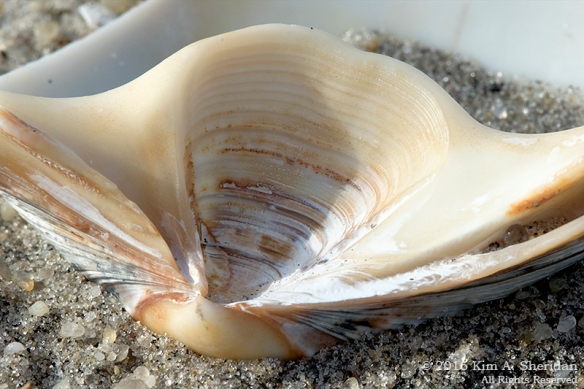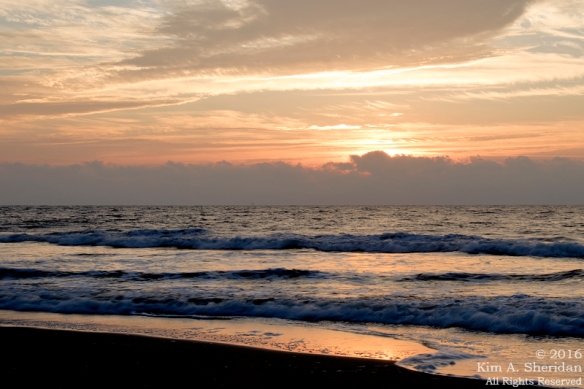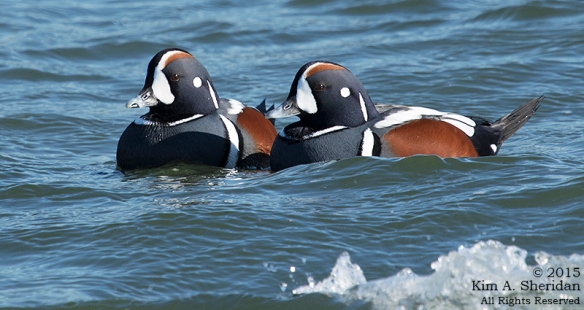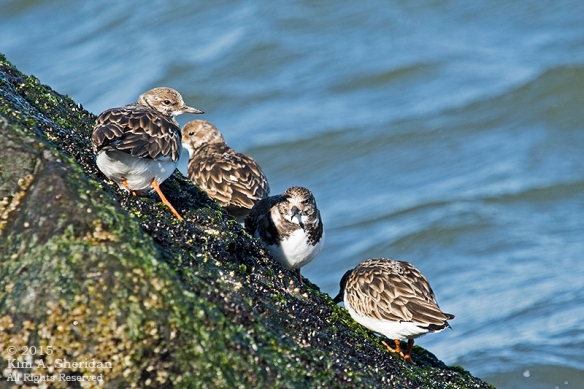
HOEK (Dutch): Corner, angle; spit of land.
The long spit of land known as Sandy Hook, comprised of beaches, dunes and maritime forest, is a recreational wonderland. It serves a higher purpose, though. For centuries the spit has guarded the entrance to New York Harbor. The peninsula, owned by the federal government since 1814, has long been essential to the safety of mariners and the defense of New York. There’s a lot of history resting on the shifting sands of Sandy Hook!
 New York Harbor is one of the busiest in the nation. Seafaring is always treacherous, and many ships foundered off the Jersey Coast. In the 1870s, the U. S. Life-Saving Service was established, to watch the coast and rescue stranded seamen. Life-saving stations like this one were built along the coast. Spermaceti Cove Station No. 2, built in 1894, housed a six man crew of “surfmen” and their rescue equipment.
New York Harbor is one of the busiest in the nation. Seafaring is always treacherous, and many ships foundered off the Jersey Coast. In the 1870s, the U. S. Life-Saving Service was established, to watch the coast and rescue stranded seamen. Life-saving stations like this one were built along the coast. Spermaceti Cove Station No. 2, built in 1894, housed a six man crew of “surfmen” and their rescue equipment.
 The Spermaceti Cove station was used by the Life-Saving Service and subsequently by the U.S. Coast Guard until the 1940s. It has served as the Visitor Center for the Sandy Hook unit of Gateway National Recreation Area since the 1970s. Damaged in Hurricane Sandy, it’s now closed, to our deep disappointment. We could only admire the old girl from the outside.
The Spermaceti Cove station was used by the Life-Saving Service and subsequently by the U.S. Coast Guard until the 1940s. It has served as the Visitor Center for the Sandy Hook unit of Gateway National Recreation Area since the 1970s. Damaged in Hurricane Sandy, it’s now closed, to our deep disappointment. We could only admire the old girl from the outside.
Also guarding the harbor is the Sandy Hook Light.
 First lit in 1764, it was captured by the British in 1776, withstood an American attack, and was held until the end of the Revolution.
First lit in 1764, it was captured by the British in 1776, withstood an American attack, and was held until the end of the Revolution.
 The Lighthouse Keeper’s Quarters now standing on the site was built in 1883. It also saw life as a U.S. Life-Saving Station.
The Lighthouse Keeper’s Quarters now standing on the site was built in 1883. It also saw life as a U.S. Life-Saving Station.
Sandy Hook Light is still in operation 24 hours a day, using an automated, fixed 3rd-order Fresnel lens. When it was built in 1764, water lapped the shore just 500 feet away. The light now stands a mile and a half from the tip of Sandy Hook.
 We took advantage of a chance to climb the 103’ tower. Along the way, deep set windows gave peek-a-boo views of Fort Hancock below.
We took advantage of a chance to climb the 103’ tower. Along the way, deep set windows gave peek-a-boo views of Fort Hancock below.
Sandy Hook’s location at the mouth of New York harbor made it the perfect place to build a fort to defend the harbor and New York City.
A wooden fort called Fort Gates served during the War of 1812. Fort Hancock replaced it in the late 1800s.
 A view of Fort Hancock from the lighthouse. This is Officers Row, a group of yellow brick residences. Enlisted men lived in barracks and a small village of supporting buildings sprouted up over the years. The population of Fort Hancock peaked during World War II at nearly 12,000 military personnel.
A view of Fort Hancock from the lighthouse. This is Officers Row, a group of yellow brick residences. Enlisted men lived in barracks and a small village of supporting buildings sprouted up over the years. The population of Fort Hancock peaked during World War II at nearly 12,000 military personnel.
Much of the fort’s defenses centered on concrete gun batteries using the most powerful cannons of the day. After WWII, the fort’s mission shifted to an array of Nike air defense missiles. At the end of 1974, Fort Hancock was officially decommissioned. It now is part of Gateway National Recreation Area.
 Fort Hancock’s Nine-gun Battery.
Fort Hancock’s Nine-gun Battery.
 These old gun batteries were quite picturesque, in a moody sort of way.
These old gun batteries were quite picturesque, in a moody sort of way.
 Battery Peck.
Battery Peck.
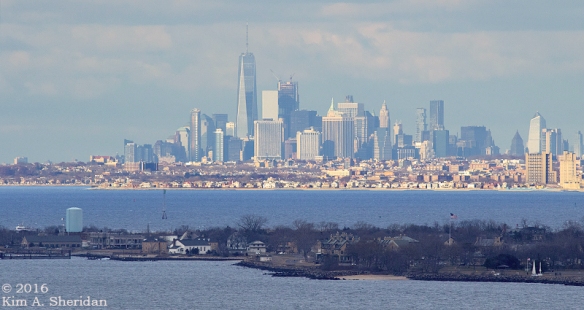 Near Sandy Hook, in Atlantic Highlands, is Mount Mitchill Scenic Overlook. Perched at 266’, the highest natural elevation on the Atlantic Coastal Plain, it offers sweeping vistas of Sandy Hook, Raritan Bay and New York City. You get a feel for the strategic importance of Sandy Hook to the defense of New York and the safety of seamen traveling into the harbor.
Near Sandy Hook, in Atlantic Highlands, is Mount Mitchill Scenic Overlook. Perched at 266’, the highest natural elevation on the Atlantic Coastal Plain, it offers sweeping vistas of Sandy Hook, Raritan Bay and New York City. You get a feel for the strategic importance of Sandy Hook to the defense of New York and the safety of seamen traveling into the harbor.
Throughout the weekend, from every high point and lighthouse, we searched for the Statue of Liberty. Throughout the weekend, from every high point and lighthouse, Robb claimed to see her.
Atop the Sandy Hook Light, Robb declared that he could see the Statue. Again,
 Don was skeptical. She never seemed to be where Robb said she was.
Don was skeptical. She never seemed to be where Robb said she was.
After two days of following Robb’s guidance, to no avail, I sought the aid of other visitors to Mount Mitchill. Within minutes, thanks to them, I had found what I was looking for.
 At last! Lady Liberty! Let’s zoom in…
At last! Lady Liberty! Let’s zoom in…
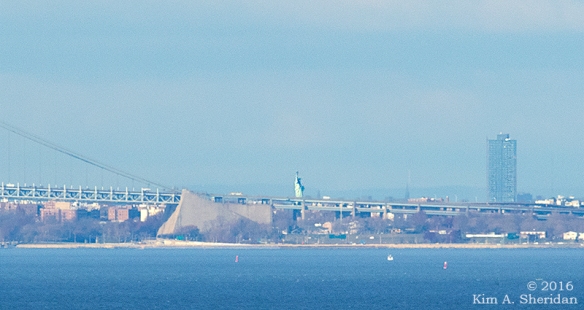 There she stands, the symbol of freedom, the symbol of welcome to all who come to our beautiful land.
There she stands, the symbol of freedom, the symbol of welcome to all who come to our beautiful land.
And guarding her flanks, Sandy Hook, ever vigilant.



